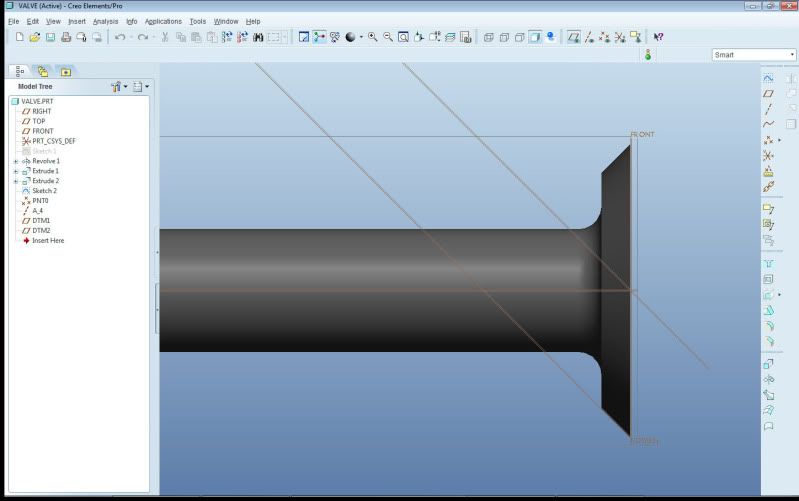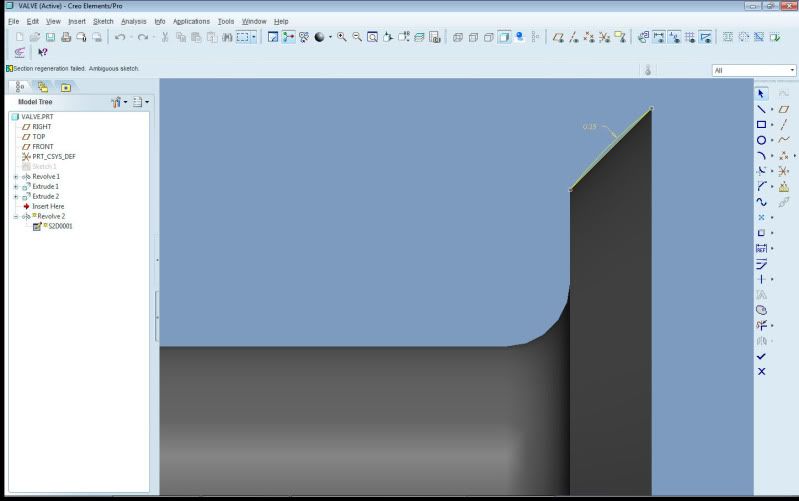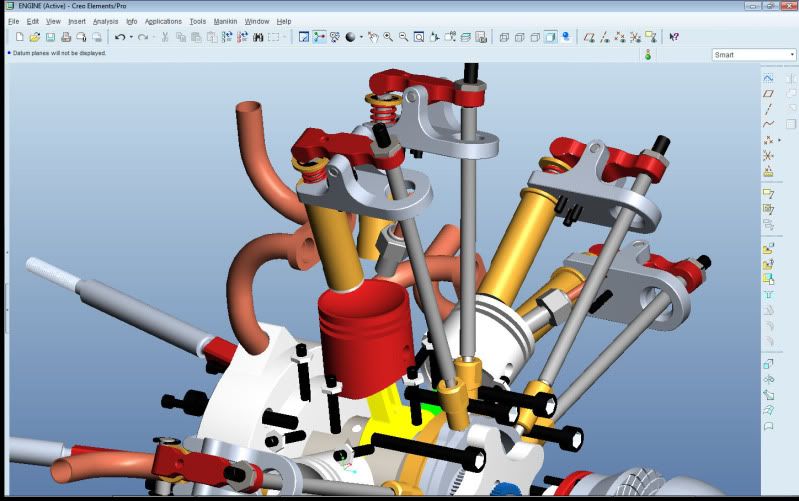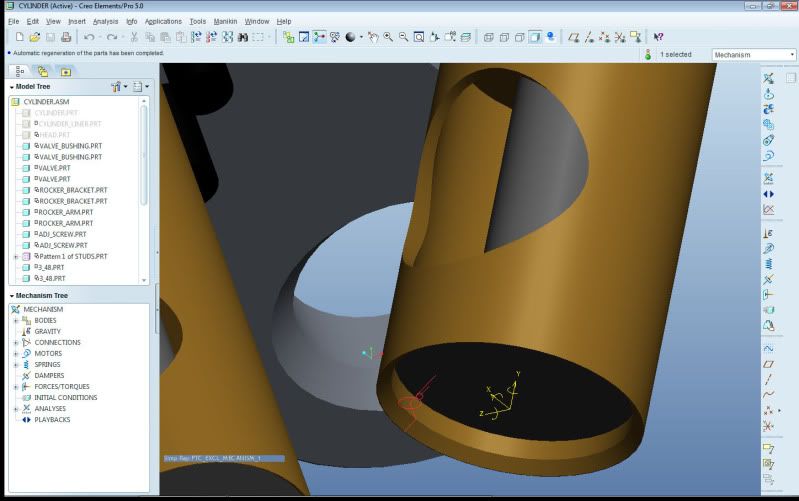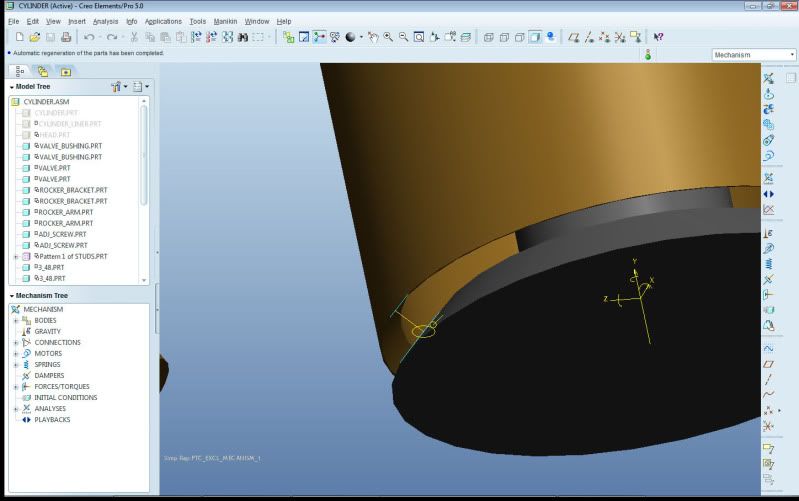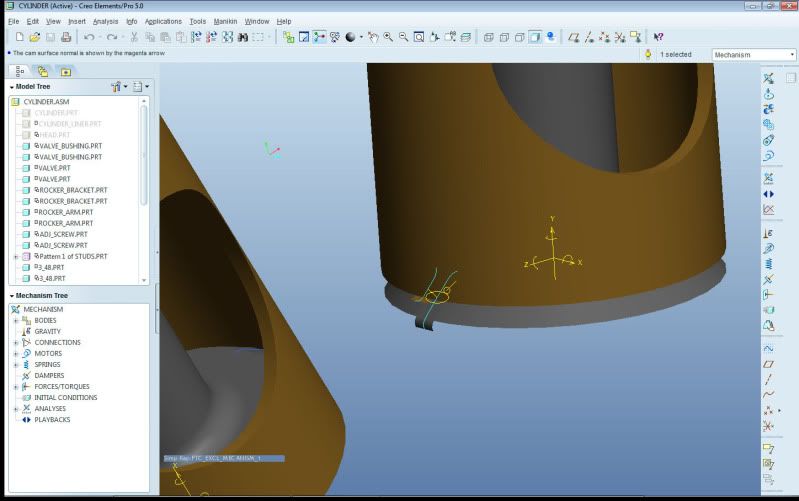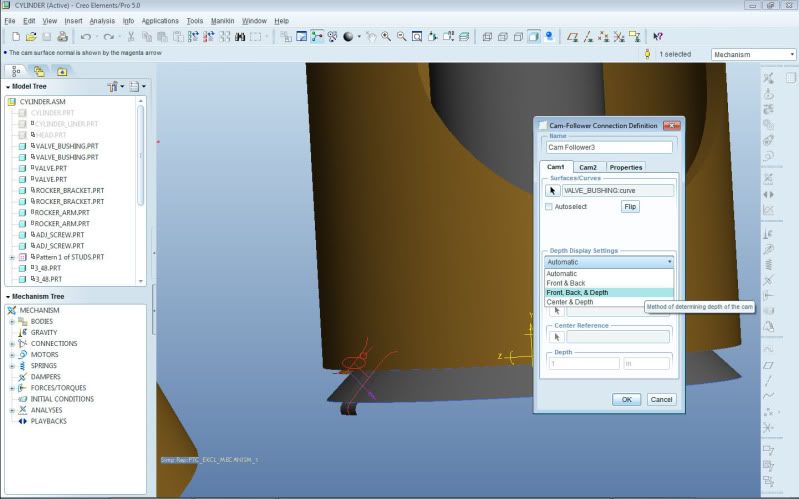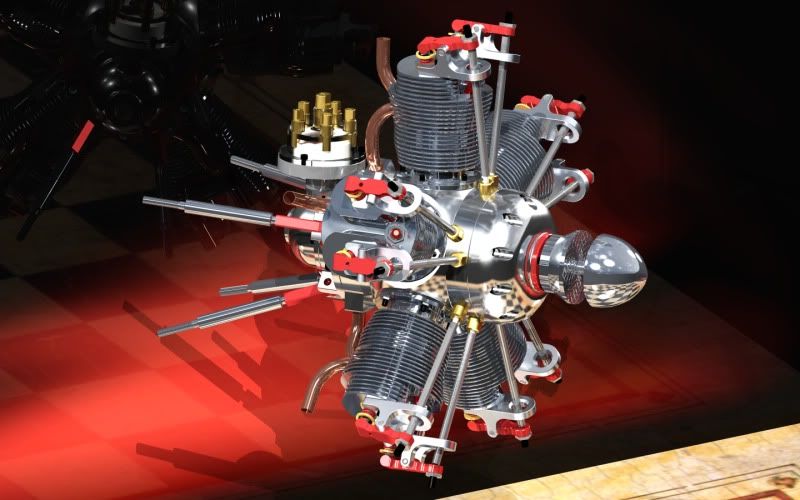Hey guys, I need help figuring out how to define a valve/ valve seat assembly. I have the primary constraint as a cylinder, but I don't know how to make the valve stop against the valve seat. I've tried to make a cam connection, but it won't let me select the tapered surface. Maybe I'm going about this the wrong way...



